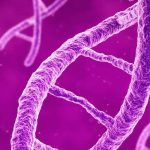
For the Better – An Updated History of Innovations in Oncology (1970s – 2021)
In my 25 years of medical practice, I have been privileged to witness the many advancements in oncology treatment. Back in the 1950s, chemotherapy was found to cure only a few rare conditions, such as testicular germ cell tumours, lymphoma and leukemia. The majority of cancers could only be cured when detected early by physical removal through surgery before they spread.
PREVENTING CANCER RECURRENCE AFTER SURGERY
The first category of the widespread use of chemotherapy was in adjuvant setting after surgery. Malignant cells may have escaped from the primary site at diagnosis, hiding in distant organs which are below the detection threshold limit of imaging and laboratory tests. These escaped cells can manifest as recurrent tumours after the surgery was done. Adjuvant chemotherapy was given with the aim of eliminating these micro-metastases.
The first clinical study demonstrating the benefit of chemotherapy in prolonging survival and reducing cancer recurrence after breast cancer surgery was conducted in the 1970s by Italian oncologist Dr. Gianni Bonadonna and his team in Italy.
Seminal clinical trials, such as the National Surgical Adjuvant Breast and Bowel Project in North America, and the Scottish Cancer Trials Breast Group tamoxifen study in the UK in the late 1980s and 1990s, further confirmed the beneficial role of adjuvant chemotherapy in colon and breast cancer, as well as the benefits of hormonal therapy in hormone receptor positive breast cancer.
Apart from using the stage of the cancer to determine who should receive chemotherapy after surgery, there was little else to guide oncologists in the early days. This meant that many had to suffer the side effects of chemotherapy without the assured benefits.
TARGETED APPROACH USING ANTIBODIES
The early impactful major advancement in this field was the discovery of trastuzumab (HerceptinTM) in preventing breast cancer recurrences. Trastuzumab is an antibody that targets a protein receptor on the surface of the breast cancer cell called Her-2.
Her-2 over-expression drives cancer cell growth and occurs in 25% of breast cancers. This is an aggressive subset of breast cancers.
Rituximab is an anti-CD20 antibody that is beneficial for treating both high-grade and low-grade B-cell lymphoma, either in combination with chemotherapy or as monotherapy. Use of rituximab has resulted in higher response as well as cure rates for high-grade B-cell lymphoma.
BETTER SELECTION OF PATIENTS FOR ADJUVANT CHEMOTHERAPY
Tumour biology is better understood with the advent of more sophisticated genetic profiling capability after 2000. The availability of microarray analysis and more recently, next generation sequencing platforms in clinical laboratories for routine use in the management of cancer patients has dramatically improved our ability to prognosticate.
The use of this technology through high through-put tumour genetic analysis methods helps us to characterise tumours. This has enabled identification of women with early-stage breast cancer harbouring a very good prognosis, who will not benefit from chemotherapy in adjuvant treatment. This helps doctors omit this noxious option and enables their patients to avoid experiencing the adverse effects of chemotherapy.
TYROSINE KINASE INHIBITORS
While the ultimate objective of cure is still not readily attainable in the treatment of most late-stage cancers, a drastic change in the outlook of previously fatal cancers into chronic conditions without significant impairment in the patients’ quality of life is a realistic aim of advanced cancer treatment nowadays.
The discovery of genetic mutations in cancer cells producing proteins that drive cancer cell signalling and growth has yielded a harvest of targets for drugs designed to shut these cancer driving mutation derived proteins down. This class of drugs is generally known as tyrosine kinase inhibitors (TKI).
The first such drug is imatinib (GlivecTM) which was approved for use in chronic myeloid leukaemia (CML) and gastrointestinal stromal tumour (GIST) in 2001. Imatinib induced several years of complete remission in patients with CML and GIST.
Complete shutdown of tumour activity in GIST may be seen on positron emission tomography (PET) scan imaging just 72 hours after initiation of imatinib. Several new improved versions of imatinib have since been approved for use in the above context.

Preparing for MRI scan
Gefitinib and erlotinib were the earlier TKIs used to treat Stage 4 non-small cell lung cancers harbouring epidermal growth factor receptor (EGFR) mutations. This latter category of lung cancers were especially common in females, never-smokers and Asians.
Prediction of response to these TKIs has evolved to be even more sophisticated, with different types of EGFR mutations being preferentially targeted by specific TKIs. Dramatic responses with significant survival gain were seen with the use of TKIs in lung cancer which was previously fatal within less than 6-8 months of prognosis.
COMPREHENSIVE TUMOUR GENETIC PROFILING
The Human Genome Project, which undertook the mapping of the entire human genetic sequence, was completed in 2003. The entire project took 13 years and USD$3 billion to complete.
In 2014, Illumina could sequence the entire genome for USD$1,000 and in 2020, a NovaSeq 6000 device could sequence a whole human genome for USD$600. Today, one can easily buy a sequencer online for USD$1,000 along with the necessary software required to start sequencing analysis on a laptop for a mere USD$100 per sample.
This is quietly revolutionizing the rapid identification of the COVID-19 variants, yielding important epidemiological information during the current pandemic.
This technology has been routinely employed in oncology clinics. The main application of tumour genetic sequencing in treating advanced cancer is to find mutation targets for cancer control.
Depending on the type and number of genetic mutations to be detected, the results may be available within 24-48 hours of specimen submission or up to 3 weeks for a 500 gene mutation panel.
Previously, tumour genetic profiling may only be done using tumour specimens obtained from a biopsy or resected during surgery. Now, it is possible to capture the cancer cell-free-DNA shed in the blood, more popularly known as “liquid biopsy”. This has enabled rapid tumour profiling to determine targeted therapy and prompt monitoring of treatment response.
HARNESSING THE IMMUNE SYSTEM
In the early 1970s, American cancer researcher and surgeon Dr. Steve Rosenberg made the observation of two patients who achieved durable spontaneous regression of metastatic stomach cancer and kidney cancer from a transplanted graft kidney when immunosuppressive drugs were withdrawn.
He surmised that the immune system must have controlled the cancers and he embarked on a lifelong mission to find ways to harness the immune system against cancer.
The pioneering work of Dr. Rosenberg and his team at the National Cancer Institute, USA confirmed the importance of T-cells in cancer control.
Proteins on the cancer cell, such as PD-L1, interacting with the PD-1 receptor on the immune T-cell will render the T-cell incapable of recognising the cancer as its target.
The same principle applies to CTLA-4 proteins expressed by cancer cells, which serve as brakes for the immune system by downregulating the immune response. The 2018 Nobel Prize in Physiology/Medicine was awarded to Prof. James Allison and Prof. Tasuku Honjo for discovering CTLA-4 and PD-1 respectively in cancer immunology.
Anti-PD1 immunotherapy, such as pembrolizumab and nivolumab (monoclonal antibodies against PD-1); atezolizumab (anti-PD-L1); and ipilimumab (anti-CTLA4), have an entrenched role by awakening the slumbering T-cells to recognise and attack the cancer cells. Immunotherapy has given cancer patients a new lease of life.
BESPOKE TUMOUR-SEEKING T CELLS
Chimeric antigen receptor (CAR-T) T-cells are engineered in the laboratory using T-cells from either the patient’s own blood or a donor’s. The chimeric antigen receptor (CAR) serves dual functions – to enable recognition of the specific tumour cell and to activate the tumour cell kill sequence when a tumour cell is recognised.
The T-cells are genetically modified using a new gene editing tool CRISPR/ Cas9 to express the CAR. CAR-T therapy has been used successfully to treat many different types of lymphoma. Its use is being expanded to include other forms of cancer.
OBSTACLES IN ACCESS TO TREATMENT
Ever since the first blockbuster cancer drug, a chemotherapy called paclitaxel used to treat breast cancer, peaked at more than USD$1 billion sales per annum in 2000, the cost of treatment has risen steadily from a few hundred dollars per month for chemotherapy drugs to a few thousand dollars for targeted therapy, such as TKIs.
It can even go up to USD$10,000 per dose of immunotherapy given every 21 days and USD$375,000 for CAR-T therapy. We need to migrate to a different model of drug development and production to improve access to new cancer treatments.
The drug approval process has not kept up with the innovations in cancer treatment. Conducting clinical trials based on current statistical methods of analysis and concepts is an expensive endeavour, which consumes the lion’s share of the research budget of any pharmaceutical and biotechnological company.
These processes need to be modernised. With such rapid progress being made, cancer as a diagnosis will soon be as benign as other chronic medical conditions, such as diabetes or hypertension, in time to come
Apart from using the stage of the cancer to determine who should receive chemotherapy after surgery, there was little else to guide oncologists in the early days. This meant that many had to suffer the side effects of chemotherapy without the assured benefits.
You may get a full copy from PRIME magazine.




